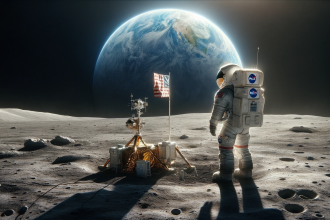Scientists Unveil Why Jupiter’s Great Red Spot is Shrinking
Jupiter's Great Red Spot is shrinking due to fewer feeding storms. 3D simulations confirm smaller storms influence the storm’s size.…
NASA Teams Engage at National Rural STEM Summit
NASA SciAct teams attended the National Rural STEM Summit in Tucson. Presenters shared strategies for enhancing STEM learning in rural…
NASA Technicians Lift Orion Spacecraft for Artemis II Mission
NASA lifts Orion spacecraft for Artemis II mission testing. Orion undergoes electromagnetic testing in updated altitude chamber. Tests simulate space…
NASA Selects Backup Crew Member for Artemis II Mission
NASA chose Andre Douglas as backup for Artemis II. Jenni Gibbons is CSA's backup for the mission. Artemis II aims…
NASA Crew Exits Mars Habitat Simulation
Four NASA volunteers leave the simulated Mars habitat. The mission aimed to mimic real Mars conditions. NASA will stream the…
NASA Astronaut Captures Hurricane Beryl’s Fury from Space
NASA astronaut captures Hurricane Beryl from the ISS. Space-based observations improve hurricane understanding and forecasting. Climate change research is vital…
NASA Astronauts Discuss Their Mission During Earth-to-Space Call
NASA invites media to discuss ISS mission with astronauts. Wilmore and Williams provide key data for Starliner flights. Event to…
NASA Webb Telescope Captures Stunning Star Formation
NASA's James Webb Space Telescope captures stunning star formation. MIRI reveals dynamic processes shaping the young protostar's environment. Webb's observations…
NASA Astronauts Simulate Moonwalks in Arizona Desert
NASA conducted moonwalk simulations in Arizona for Artemis III mission. Simulations tested spacesuits, tools, and navigation technology. Scientists and engineers…
SpaceX to Launch Northrop Grumman’s 21st Resupply Mission
The 21st Northrop Grumman resupply mission targets early August launch. Cygnus spacecraft will deliver science experiments, supplies, and station hardware.…
















